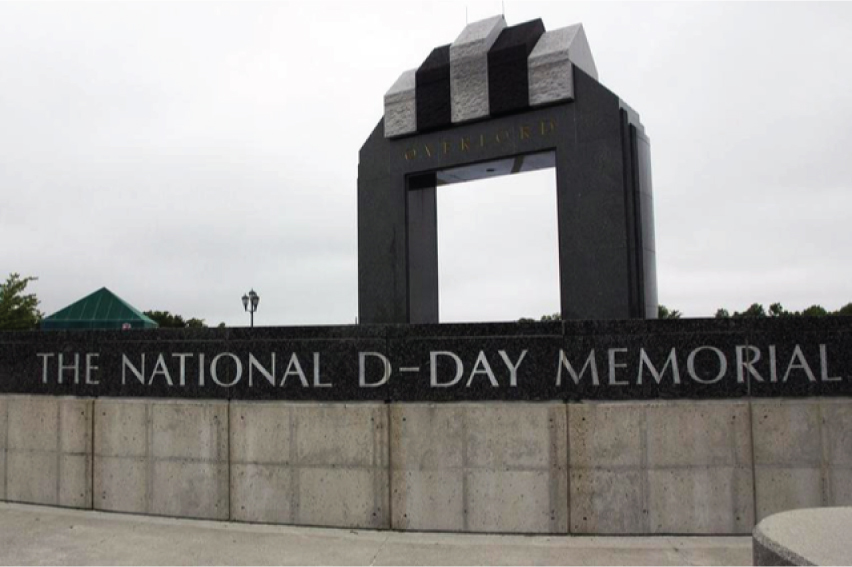Today marks the 79th anniversary of D-Day and the Allied invasion of Normandy in WWII. D-Day remains the largest amphibious invasion in history with over 156,000 Allied troops invading northern France by air and sea. Of the 4,000 soldiers who lost their lives on D-Day, about 2,500 were American.
But Where is the National Memorial?
You might be surprised to find the National D-Day Memorial was opened in Belford, Virginia in June 2001. A small town with around 7,000 residents located near the Blue Ridge Mountains, Belford is a 4-hour drive from Washington DC, where many national moments are located.
Why Belford? Memories of the “Belford Boys.”
Although it might seem like an unusual location for a National Memorial, the town of Belford has a deep symbolic connection with D-Day and quickly became Congress’ top choice for a memorial site during the planning phase.
Of the US soldiers that invaded Normandy, 37 of them were from the town of Belford. Many of those young men were in Company A of the 116th Infantry Regiment and would be part of the first wave to take Omaha Beach. At the end of the day, 20 of the 37 men from Belford were killed in action.
Considering their wartime population, Belford is noted as having suffered “the Nation’s highest known per capita D-Day loss.” Posthumously dubbed the “Belford Boys,” this small rural community endured a devastating loss that can still be felt today. With such a sobering connection to the invasion of Normandy, Congress decided to honor the town’s sacrifice by commissioning the National D-Day memorial in Belford.
About the Memorial
Located on more than 50 acres, the memorial was built upon a mixture of sand from the coast of Normandy and Bedford soil. The stone, Overlord Arch, is the signature monument and stands forty-five feet in the center of the memorial. On the 57th anniversary of the invasion (June 6, 2001), President George W. Bush officially dedicated the National D-Day Memorial.
Since that original dedication over two decades ago, the D-Day Memorial continues to welcome thousands of visitors each year and educates guests on the D-day invasion while allowing them to walk the consecrated soil of the memorial. If you’re able, we highly recommend visiting the National D-Day Memorial to learn about the individual stories of sacrifice. The Foundation also offers various special ways of remembering loved ones on the Memorial Grounds with commemorative bricks, annual poppy and luminaria, cherry trees, or benches.
The Belford Memorial is a great example of knowing our history and honoring our heroes. Visit the site for more information on how to honor a hero in your life.

